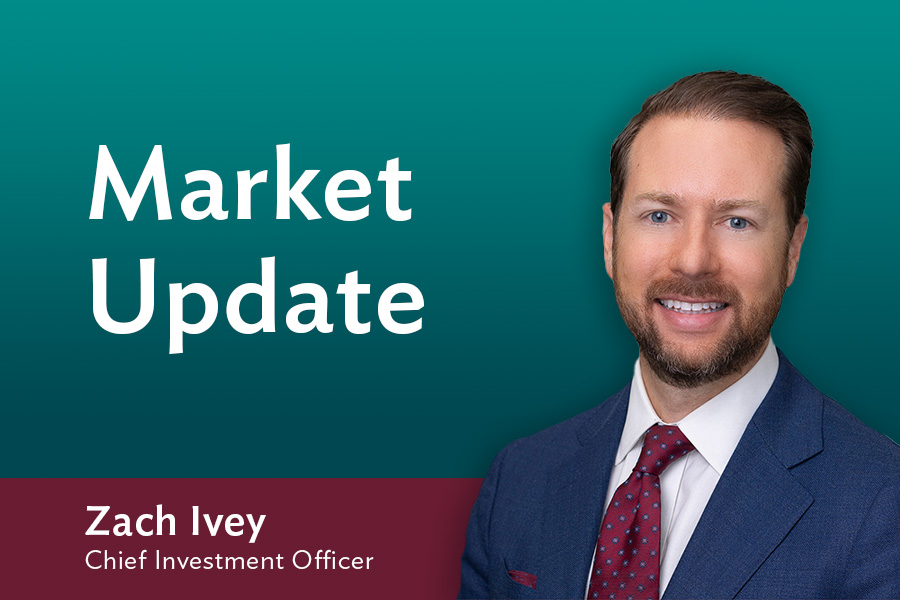Navigating Choppy Waters: The Power of Disciplined Investing in Uncertain Times

Recent tariffs and policy uncertainty have sparked market anxiety reminiscent of early 2020. Reflecting on the letter I wrote five years ago, it began:
“COVID-19 has forced the economy into a medically induced coma, and the recovery period is uncertain. Please bear with me as I recap one of the most challenging quarters in financial market history.”
It’s hard to believe five years have passed since I wrote those words. At that time, fear was pervasive—not just among investors but throughout society—as we sheltered at home, uncertain about the future. Yet unknown to me as I drafted that letter, the market had already bottomed on March 13, 2020, and global stocks (MSCI All Country World IMI Index) ended the year up 16.8%.
Fast-forward five years, and we again find ourselves in uncertain times. On January 1, I began my new role as chief investment officer of Savant—certainly not envisioning a significant market sell-off during my first 90 days. Yet as a student of markets for over 25 years, this volatility is familiar territory. I am reminded of Warren Buffett’s words from the foreword to Benjamin Graham’s “The Intelligent Investor”:
“To invest successfully over a lifetime does not require a stratospheric IQ, unusual business insights, or inside information. What’s needed is a sound intellectual framework for making decisions and the ability to keep emotions from corroding that framework… You must supply the emotional discipline.” (Bold and underline emphasis is my own.)
I’m grateful that Savant’s foundation rests on a robust intellectual framework known as evidence-based investing, aligning seamlessly with my personal investment virtues of wisdom, temperance, and humility. Times of heightened market uncertainty put these virtues—and our philosophy—to the test, helping us focus clearly on what we can control: global diversification, disciplined asset allocation, and managing risk thoughtfully.
Let’s explore the current economic landscape and review the market performance over the past quarter:
Economy
The first quarter of2025 showed modest growth amid easing inflation. Real GDP growth slowed slightly from 3.1% in the third quarter to 2.4% in the fourth quarter of 2024, reflecting resilient consumer spending tempered by weaker investment. While momentum carried into 2025, first-quarter GDP estimates face downside risks from policy uncertainty, new tariffs, and a surge in imports (which subtract from GDP). Inflation softened, with the consumer price index (CPI) averaging 2.4% year-over-year, partly driven by declining energy prices. Labor markets remain stable, averaging 152,000 new jobs monthly with unemployment steady at 4.2%. Despite these positives, policy uncertainties and new tariffs create downside risks. The Fed held rates steady, adopting a cautious stance after last year’s significant rate cuts.
Some analysts are now forecasting higher odds of a recession in 2025. We don’t pretend to know what will happen with the economy in 2025, as many others do. Still, it’s worth noting that unforeseen events can render even the most thoughtful forecasts irrelevant (remember 2020)! Forecasters often miss the mark, underscoring the uncertainty of short-term market movements, which is why we emphasize constructing resilient, well-diversified portfolios rather than relying on predictions.
Stocks
Market volatility tested investor emotions, tempting many to retreat or chase performance. U.S. large stocks (S&P 500 Index) fell -4.7%, while U.S. large value stocks (Russell 1000 Value) outperformed, up +2.1%, as investors sought defensive, undervalued assets. More economically sensitive small caps (Russell 2000 Index) fell -9.3%. Global stocks (MSCI All Country World IMI Index) fell -1.8%, supported by strong stock performance outside the U.S. International stocks (MSCI EAFE Index) were up 7.0%, and emerging markets (MSCI Emerging Markets Index) gained 2.6%.
The first quarter underscored the critical importance of diversification across sectors and global markets, particularly as international stocks outperformed U.S. stocks. Investing is inherently risky, and we never know where the market returns are going to come from. Instead of pretending to have a crystal ball and trying to chase the hottest markets, we position our portfolios across the widest range of opportunities to help better capture market returns and weather any market storm.
Bonds
Bonds outperformed stocks in the first quarter as investors sought safety in the face of heightened uncertainty and market volatility. U.S. intermediate-term bonds (Bloomberg U.S. Aggregate Bond Index) gained +2.7%, and international bonds (Bloomberg Global Aggregate Ex US Index) were flat at -0.1%. TIPS (Bloomberg Global Inflation Linked U.S. TIPS Index) climbed 5.1% as real rates declined. Rates across the yield curve dropped, with the two-year Treasury rate falling from 4.25% to 3.89%. Falling yields signaled growing anticipation of future rate cuts, highlighting reinvestment risks for investors holding excess cash.
Alternatives
Alternative investments continued to play a vital role in portfolios during the first quarter. Reinsurance (SwissRe Global Cat Bond Index) rose 1.1%, while Lending (Cliffwater Direct Lending Index) posted a +0.9% gain. Real Assets (DJ Brookfield Global Infrastructure Index) were up +5.1% as investors favored tangible assets with stronger ties to the economy. Multi-strategies (Credit Suisse Multi-Strategy Index) added +2.6% and Trend Following (Credit Suisse Managed Futures Liquid Index) rose by +2.4%. These assets demonstrated their value through positive, uncorrelated returns.
Reflecting on the lessons from 2020 and seeing how far we’ve come underscores the power of patience and disciplined investing. While uncertainty in markets is inevitable, we believe our disciplined, evidence-based approach—grounded in rigorous research—helps position us well to navigate through it.
Five years ago, amid deep ambiguity, we wrote:
“It is difficult to be patient while ambiguity is high, but these are the times when patience is most required. Resist the urge to panic-sell during large down days, and equally resist panic-buying during large rallies. Remember, asset allocation works to balance your risk and reward over time. Sticking to your plan remains key to investment success.”
Since March 31, 2020, global stocks have risen approximately 90% (as of April 9, 2025), reminding us of the importance of staying invested, diversified, and focused on what we can control. We remain committed to guiding you with wisdom, temperance, and humility.
Thank you for your continued trust and partnership as we pursue your financial goals together.
(Source: Morningstar Direct. Data as of 3/31/2025. For index information, visit www.savantwealth.com/index_disclosures.)
Historical performance results for investment indices, benchmarks, and/or categories have been provided for general informational/comparison purposes only. Past performance may not be indicative of future results. Different types of investments involve varying degrees of risk. Therefore, it should not be assumed that future performance of any specific investment or investment strategy, including the investments and/or investment strategies recommended and/or undertaken by Savant, or any non-investment-related services, will be profitable, equal any historical performance levels, be suitable for your portfolio or individual situation, or prove successful.

